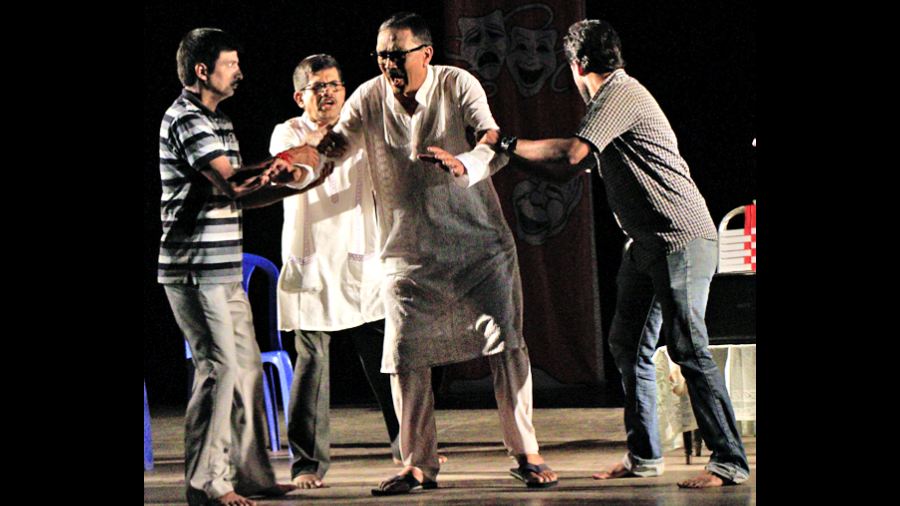If community theatre exists in West Bengal, it does so in the activities of hundreds of theatre groups in small towns scattered across the length and breadth of the state. These groups are deeply embedded in the ecosystem of their communities in every sense of the term — the group members are local people, the audience is from the neighborhood, and the plays produced thematically resonate with the intellectual and emotional wavelength of the community. Members remain steadfastly and proudly attached to the groups for decades, sometimes as entire family units. If members are loyal to the groups, so are the audiences who unstintingly extend their patronage to these theatre groups.
An interesting subject of sociological enquiry could be the phenomenon of the productions of the theatre groups emerging from and contributing to the ethos of the communities. The productions mounted by these community theatre groups need to be viewed through a critical lens different from the one used to view those produced by Calcutta theatre groups given the fact that the structure and practice of the formations are fundamentally dissimilar.
Yatrik Naihati is one such community theatre group, which has been around for many years, nurtured by and, in turn, nurturing the cultural life of Naihati. The group’s latest offering was Lockdown, written and directed by Sunit Bhattacharya. The play is not about the lockdown at all, but refers to the lockdown to launch a social fantasy. The narrative has a small group of tourists finding themselves suddenly confined in a house, to be gradually sucked into a vortex of events that lead to an exposition of a rather dubious phase in their past. There are logical inconsistencies in the plot, which, truth be told, demands suspension of disbelief of a steep order. The performances are uneven and the direction is average. But the play works because, as it has been pointed out earlier, the makers and the audience share a community fantasy of poetic justice.











